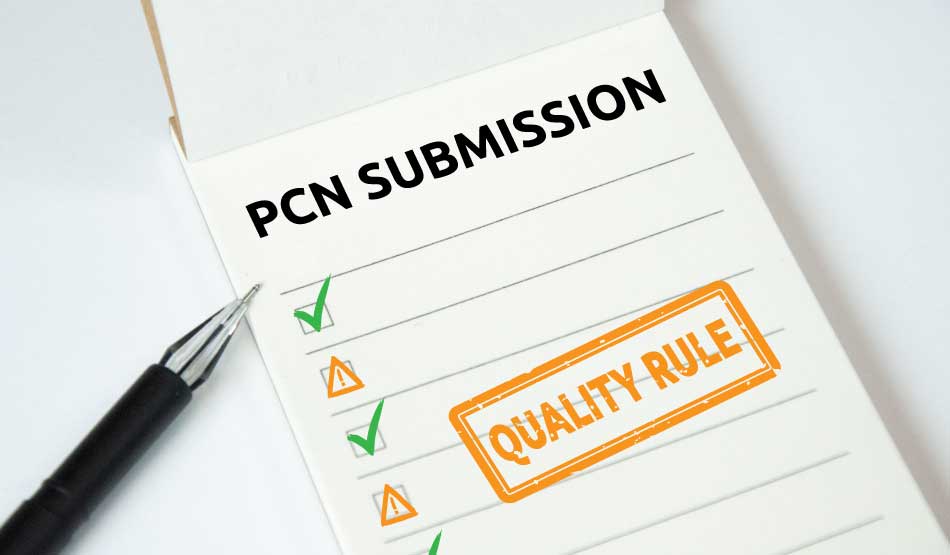03 Oct

So, you are getting ready to submit a PCN dossier, and you want to make sure everything is in line with EU regulations, right? Great! One of the key things to keep in mind is the quality of the data you are submitting.
Poor data quality can lead to confusion, delays, or even legal troubles. To avoid these headaches, you need to know about the various warnings that might pop up during the submission process— like QLT507, QLT618, QLT574, QLT954, and QLT869. Each of these warnings highlights specific issues related to classification, notification, or the use of UFIs.
Let us break them down so you can handle them like a pro.
- QLT507: Voluntary submissions cannot be classified for health or physical hazards. An exception can be made if classification is only regarding explosive or gases under pressure hazards.
This warning can be triggered because the mixture is classified as non-hazardous. Non-hazardous mixtures do not require a PCN notification, although you may still submit a PCN notification voluntarily.
Here you must ask yourself ‘’Is my mixture classified as non-hazardous?’’. If the answer is yes, voluntary submission is the way to go. The same as if your company is based outside the EU.
If you choose to make a voluntary submission, you must explain your reasons for doing so (if you are notifying a non-hazardous mixture or if have a company (legal entity) based outside the EU).
- QLT618: One UFI cannot correspond to more than one PCN number submitted in the same market placement country.
This warning shows up when the system notices that the same UFI number is being used for more than one formulation. This can happen if, for example, you are using the same UFI for different versions of a product, like with different scents or colours.
However, it gets tricky when the same UFI is linked to completely different products. Be extra careful not to use UFI codes that were not generated by you, as this could lead to misleading information and serious compliance issues.
- QLT574: Any changes to the notification should be reported as an ‘update’ and not as a new ‘initial’ submission. Therefore new ‘initial’ submissions:
- for products having the same trade name
- made by the same company
- targeted at the same market area/country and
- and belong to the same product category
are not allowed.
This warning can be triggered due to the incorrect selection of the initial submission option. As indicated in the warning, you need to perform an update of the notification. Since the initial submission is still valid, you must update the PCN notification when minor changes occur.
If there has been a significant change in the composition of the product, you should select the notification type “New Submission after a Significant Change of Composition” instead of “Initial Submission.”
- QLT954: Notifiers should not use same UFI for different compositions. Therefore new ‘initial’ submissions:
- for products having the same UFI
- made by the same company
- for different PCN number
are not allowed unless the composition is the same.
This warning can be triggered due to the incorrect selection of the initial submission option. As indicated in the warning, you need to perform an update of the notification. Since the initial submission is still valid, you must update the PCN notification when minor changes occur.
If there has been a significant change in the composition of the product, you should select the notification type “New Submission after a Significant Change of Composition” instead of “Initial Submission.”
- QLT869: If the MiM (mixture in mixture) does not have UFI and is instead identified with providing the available component(s) of the composition, then the legal entity in the ‘Suppliers’ record should be from EU country. Please note that the responsibility for mixtures imported into the EU remains on the importer.
This warning can be triggered because one of your raw materials is supplied by a non-EU-based company. In this case, you can list yourself as the EU-based supplier and inform the German Poison Centre that you are the importer of this substance into the EU.
Alternatively, your non-EU supplier can make a voluntary PCN submission and provide you with the UFI number, which you can then include in your PCN notification.
So, why is all this so important?
Simply put, maintaining high-quality data in your PCN dossiers is not just about ticking boxes; it is about complying with EU regulations and safeguarding public health. Insufficient or inaccurate information can cause significant delays and even lead to penalties.
In the end, investing time in verifying the accuracy and completeness of your PCN data does not just protect your business from regulatory issues; it also reinforces your commitment to chemical safety and transparency. So, take a good look at your submissions, review them carefully, and update them whenever necessary to stay compliant with regulatory requirements and industry best practices.
By keeping these tips in mind, you will not only avoid common pitfalls but also contribute to a safer and more transparent chemical industry.
Want to know more about submitting poison centre notifications directly from Chemius? Don’t waste time & resources with complicated and expensive poison centre notifications and management. Do it efficiently and cut time by doing it directly from Chemius.



Spela Hudobivnik Kos